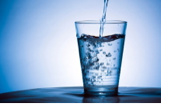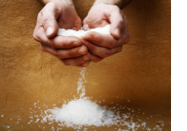Sign up for FlowVella
Sign up with FacebookAlready have an account? Sign in now
By registering you are agreeing to our
Terms of Service
Loading Flow

Water
-High heat capacity – absorbs and releases large amounts of heat before changing temperature. Important for temperature homeostasis
-High heat of vaporization – cooling effect due to heat absorption by water to break H-bonds upon vaporization
-Polar solvent properties – water is the universal solvent. Water’s – ends orient toward the solute’s + end(s) and dissociate the solute.
-Forms hydration layers around large charged molecules (e.g. proteins) forming “biological colloids” e.g. cerebrospinal fluid and blood.
-Water serves as the body’s major transport medium (e.g. blood plasma, urine, sweat, mucus)
-Reactivity – Water is a reactant in rxns. E.g. hydrolysis (splitting of water) and dehydration synthesis (bond formation by the removal of water) reactions
-Cushioning – Water protects body against physical trauma. E.g. cerebrospinal fluid cushions the brain
Salts
-Contain cations other than H+ and anions other
than OH–
-Are electrolytes; they conduct electrical currents
-Dissociate in water into their components
-Include NaCl, calcium carbonate, potassium chloride
-Calcium phosphate make bones and teeth hard
-electrolytes essential for contraction of muscles and nerves
- Certain salt ions important to production and action of enzymes
- iron is part of hemoglobin molecules to transport oxygen in red blood cells
18. Explain the importance of water and salts to body homeostasis.

